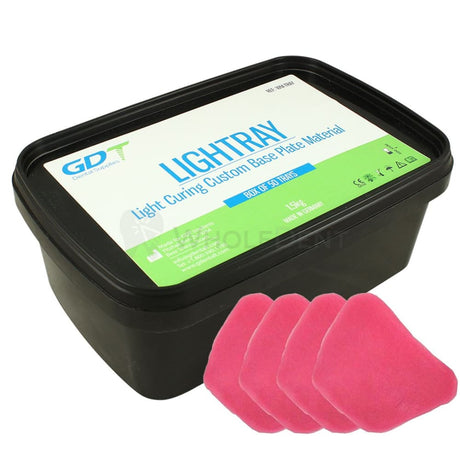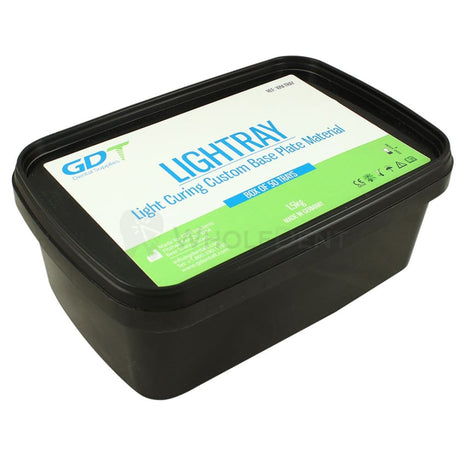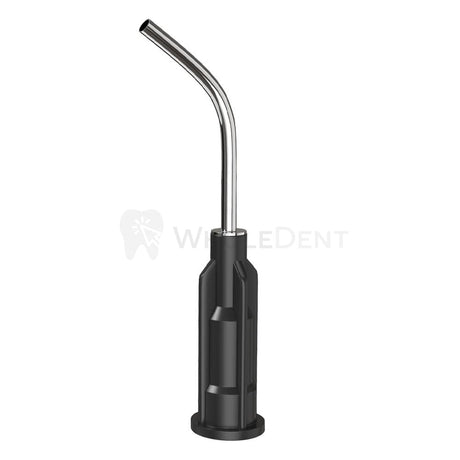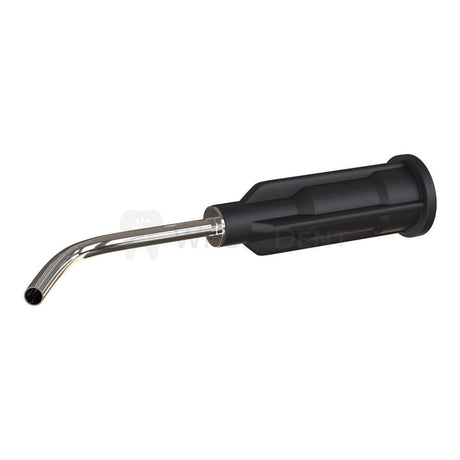Juego de lavado y material de impresión DSI UltraSil Putty VPS
$23.90 as low as $21.51Precio unitario /AgotadoGDT suministra material de placa base personalizado de curado por luz LighTray
$99.00 as low as $89.10Precio unitario /AgotadoReparación dental temporal OTC de AHL
$49.90 as low as $44.91Precio unitario /AgotadoMasilla para material de impresión Zhermack Zetaplus
$105.00 as low as $94.50Precio unitario /AgotadoDSI Cordón DS Cordón de retracción gingival Impregnado en cloruro de aluminio
$16.90 as low as $15.21Precio unitario /AgotadoCordón de retracción gingival DSI DS-Cord con epinefrina
$16.90 as low as $15.21Precio unitario /AgotadoMaterial de impresión DSI UltraSil VPS
$43.90 as low as $39.51Precio unitario /AgotadoGel catalizador Zhermack Zetaplus
$24.90 as low as $22.41Precio unitario /AgotadoDSI Cordón de retracción gingival DS-Cord no impregnado
$16.90 as low as $15.21Precio unitario /AgotadoJuego de masilla para material de impresión DSI UltraSil VPS
$105.00 as low as $94.50Precio unitario /AgotadoDental Mixing Dispenser Gun 25ml
$125.00 as low as $112.50Precio unitario /AgotadoSpident I-SiL™ Light Body VPS Impression Material
$59.90 as low as $53.91Precio unitario /AgotadoMaterial de impresión de registro de mordida de impresión DSI Ultrasil
$31.50 as low as $28.35Precio unitario /AgotadoBandeja de impresión de impresión negativa de suministros GDT
$19.90 as low as $17.91Precio unitario /AgotadoMaterial de impresión de alginato Pentron Ypeen
$21.90 as low as $19.71Precio unitario /AgotadoMaterial de impresión de registro de mordida de impresión DSI Ultrasil
$55.00 as low as $49.50Precio unitario /AgotadoSpident I-SiL™ Bite Registration
$75.00 as low as $67.50Precio unitario /AgotadoMaterial de impresión de alginato GC Aroma Fine Plus, juego regular, 1000 g
$65.00 as low as $58.50Precio unitario /AgotadoPolvo de fraguado rápido de material de alginato DSI 450 g
$49.90 as low as $44.91Precio unitario /AgotadoTubos de material de impresión Bukwang DuoSil Tray
$43.90 as low as $39.51Precio unitario /AgotadoLavado de material de impresión Zhermack Zetaplus
$26.90 as low as $24.21Precio unitario /AgotadoSet de gel catalizador de lavado de masilla Zhermack Zetaplus
$99.90 as low as $89.91Precio unitario /AgotadoJuego de lavado y material de impresión DSI UltraSil Putty VPS
$109.90 as low as $98.91Precio unitario /AgotadoMaterial de impresión de lavado medio Muller-Omicron Alphasil
$24.90 as low as $22.41Precio unitario /AgotadoMaterial de impresión de lavado intenso Alphasil de Muller-Omicron
$24.90 as low as $22.41Precio unitario /AgotadoMaterial de impresión de lavado claro Muller-Omicron Alphasil
$24.90 as low as $22.41Precio unitario /AgotadoJuego de tubos GC Fit Checker Advanced
$179.90 as low as $161.91Precio unitario /AgotadoKit de material de impresión Muller-Omicron Alphasil
$87.90 as low as $79.11Precio unitario /AgotadoGDT Supplies Puntas de aguja de flujo dobladas de calibre 20, 20 piezas
$25.00 as low as $22.50Precio unitario /Agotado
FAQs
Before a dentist begins certain dental procedures, they must take an impression of the patient's mouth to determine how the arches fit together. They may also examine the size and relationship between the gums and teeth prior to taking any action.
Dental impressions have various applications, and these include the following:
- Sleep apnea oral appliances
- Nightguards
- Retainers
- Crowns, bridges, or implants
- Porcelain veneers and clear aligners
- Teeth whitening trays
There are three main types of dental impressions, and these are as follows:
- Preliminary impressions: Whether it's for diagnostic purposes or the fabrication of different prostheses, preliminary impressions provide dentists with a visual aid to help them plan the patient's treatment.
- Final impressions: When a dentist takes a final impression, they will send it to the laboratory for the technician to create crowns, bridges, or dentures, among other dental prosthetics.
- Bite registration: A dental professional may request a bite registration from the patient to determine how the upper and lower teeth fit.
Depending on the type of dental impression, the entire process can take anywhere between five to 15 minutes.
Traditional methods include filling up the trays with a special material before placing them in the patient's mouth to leave an imprint. The putty can take up to five minutes to set and requires a technician to pour stone into the mold to create a cast.
On the other hand, some dental offices have equipment to take digital dental impressions. A dentist may trace the structure of the patient's teeth with a special wand that snaps thousands of pictures before using software to stitch them together.
While the digital impression procedure does not require putty, it can take about the same time as other traditional methods.
Typically, when a dentist creates a mold of a person's mouth, they'll throw it away after using it.
However, in some cases, a dental professional may store the cast and return to it occasionally to compare the patient's progress after their restorative treatments.
Dental impressions are typically safe for children and adults without any major side effects or risks.
However, some might find that the special putty used to create the mold during the procedure can trigger a gag reflex, making the entire process uncomfortable.
In such situations, the dentist must work with the patient to minimize this unpleasant experience.
Another thing to remember is that the special putty may cause loose teeth to fall out. While this is a rare occurrence, it's essential for the dentist to consider such situations and take corrective measures to ensure the patient's oral health.













































